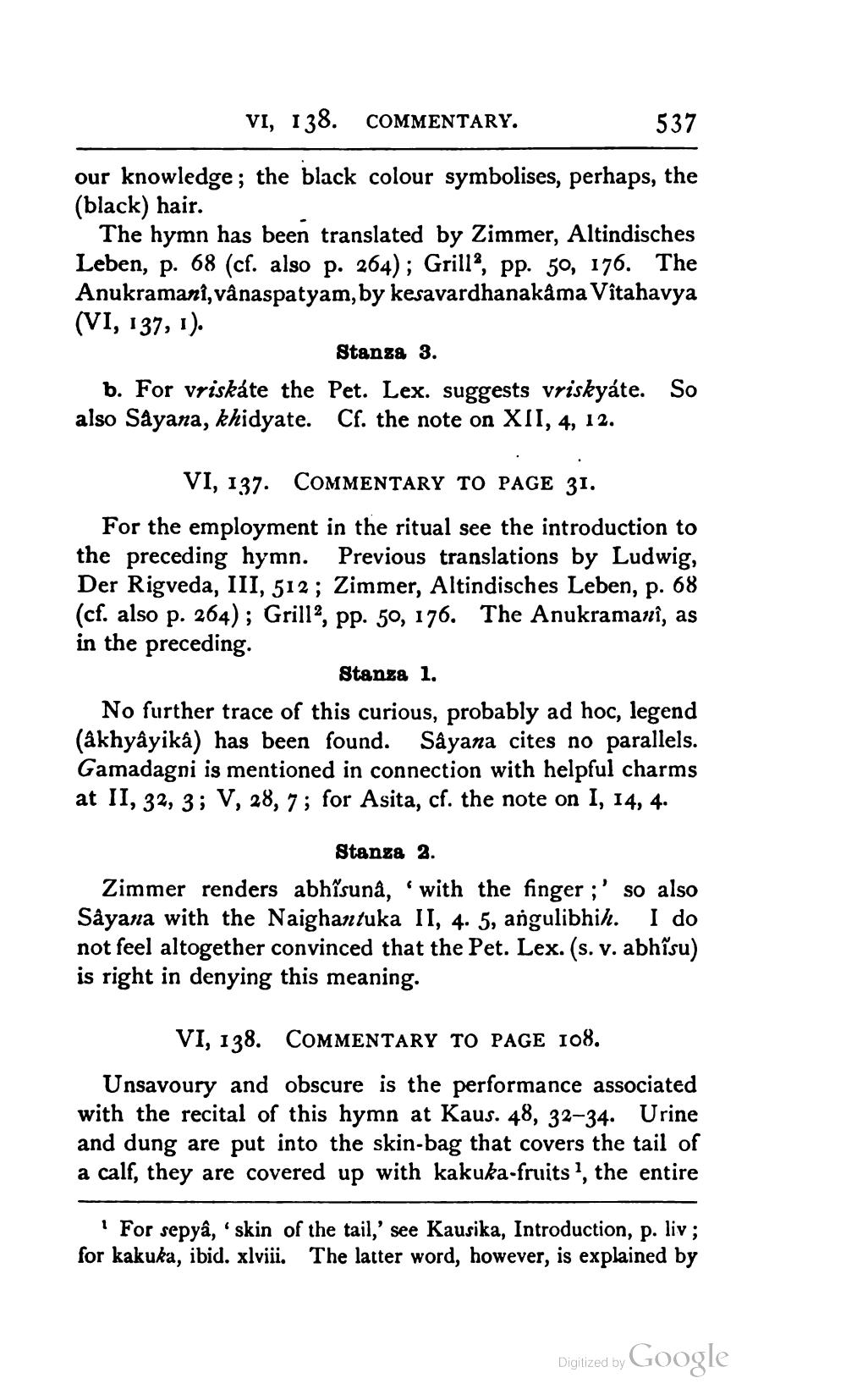________________
VI, 138.
537
our knowledge; the black colour symbolises, perhaps, the (black) hair.
The hymn has been translated by Zimmer, Altindisches Leben, p. 68 (cf. also p. 264); Grill3, pp. 50, 176. The Anukramani, vânaspatyam, by kesavardhanakâma Vîtahavya (VI, 137, 1).
b. For vriskáte the also Sâyana, khidyate.
COMMENTARY.
Stanza 3.
Pet. Lex. suggests vriskyáte. So Cf. the note on XII, 4, 12.
VI, 137. COMMENTARY TO PAGE 31.
For the employment in the ritual see the introduction to the preceding hymn. Previous translations by Ludwig, Der Rigveda, III, 512; Zimmer, Altindisches Leben, p. 68 (cf. also p. 264); Grill2, pp. 50, 176. The AnukramaӔ, as in the preceding.
Stanza 1.
No further trace of this curious, probably ad hoc, legend (âkhyâyika) has been found. Sâyana cites no parallels. Gamadagni is mentioned in connection with helpful charms at II, 32, 3; V, 28, 7; for Asita, cf. the note on I, 14, 4.
Stanza 2.
Zimmer renders abhîsunâ, with the finger;' so also Sâyana with the Naighantuka II, 4. 5, angulibhik. I do not feel altogether convinced that the Pet. Lex. (s. v. abhĭsu) is right in denying this meaning.
(
VI, 138. COMMENTARY TO PAGE 108.
Unsavoury and obscure is the performance associated with the recital of this hymn at Kaus. 48, 32-34. Urine and dung are put into the skin-bag that covers the tail of a calf, they are covered up with kakuka-fruits1, the entire
' For sepyâ,' skin of the tail,' see Kausika, Introduction, P. liv ; for kakuka, ibid. xlviii. The latter word, however, is explained by
Digitized by
Google




